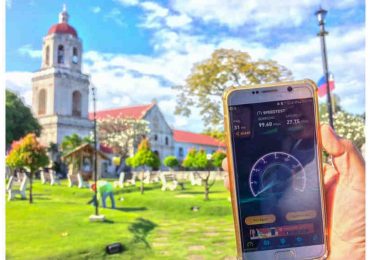Globe presses government anew to enable deployment of broadband infrastructure.
The Philippines isn’t likely to achieve its goal of providing digital literacy for all in the absence of a favorable government policy that would equip public elementary and secondary schools with Internet access by 2016.
The Philippine Digital Strategy, formulated in 2011, sets the national vision and road map to achieving ICT development in the country. The PDS set targets for the provision of basic broadband access and internet opportunities for all by 2016. Among such targets is that 100% of secondary schools in the country and 80% of elementary schools should have internet access by 2016.
“To help the education sector, we are poised to aggressively deploy broadband infrastructure in the country. We want to build more cell sites and fill the infrastructure gap so we can continue to support the country’s growth. To do this, we need government support to prioritize Internet infrastructure build. Today, far too many young Filipinos are unable to take full advantage of advancement in digital technology when compared with other countries, because a significant portion of the public school system does not have Internet access,” notes Globe Senior Vice President for Corporate Communications Yoly Crisanto.
A broadband policy brief released by Arangkada Philippines, a major advocacy of the Joint Foreign Chambers of the Philippines, showed that close to 80% of public schools in the Philippines are still without internet access.
According to the report, out of 38,683 public primary schools in the country, only 14% or 5,503 have Internet access while 33,180 or 86% have no data connectivity. Also, only 55% or 4,360 or public secondary schools out of a total number of 7,915 have internet access while the remaining 3,555 schools or 45% are yet to gain internet access. In total, 79% of the country’s total number of public primary and secondary schools are yet to have data connectivity.
“Access to basic education is a fundamental human right and by integrating ICT into our public education system, we are giving our youth the capability to compete globally in today’s digital environment,” Crisanto said.
In line with its vision of an ICT-integrated public education, Globe has been implementing the Global Filipino School program for over three years now. The program is a long-term educational initiative that seeks to transform select public schools into centers of ICT excellence and provide innovative teaching methods and information and communications technology. Specifically, the program aims to advance 21st century learning in our public school system through an ICT-integrated education and also create teacher training hubs to increase understanding and effective usage of ICT in the classroom. In February this year, two public elementary schools in Cagayan de Oro City, namely Indahag Elementary School and Father William F. Masterson, SJ Elementary School became the first two schools to benefit under the expanded GFS program of Globe.
Globe has emphasized that mobile data explosion amid growing access to Internet connectivity, requires more bandwidth than traditional voice and text messaging services. Thus, it demands the establishment of more cell sites for telecommunication operators to deliver mobile data services especially indoors. Also, smartphones continue to evolve into all-encompassing wireless personal computers, requiring telecommunication operators to construct additional cell sites to enable their respective networks to transmit enormous amount of data.
Based on the study made by TowerXchange in February 2016, the number of unique physical cell sites in the Philippines is one of the lowest in Asia with a combined 15,000 cell sites from the two leading providers.












